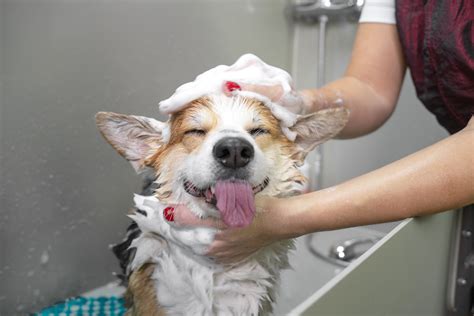Introduction
Pets are an integral part of our lives, providing unconditional love, companionship, and joy. To ensure their optimal health and well-being, proper grooming and hygiene practices are paramount. By adhering to these guidelines, you can safeguard your pet’s physical and mental health while fostering a strong bond between the two of you.

Importance of Pet Grooming and Hygiene
-
Skin and Coat Health: Regular grooming removes dead hair, dirt, and debris, preventing skin irritation and promoting a healthy, shiny coat.
-
Parasite Prevention: Grooming helps detect and remove fleas, ticks, and other parasites that can transmit diseases and cause discomfort.
-
Dental Health: Brushing your pet’s teeth can prevent periodontal disease, tooth decay, and other dental issues.
-
Improved Mood and Behavior: Well-groomed pets are more comfortable and likely to engage in positive behaviors, such as playing and cuddling.
-
Strengthened Human-Animal Bond: Grooming provides an opportunity for bonding, allowing you to check for medical issues and strengthen your connection with your furry companion.
Types of Pet Grooming
-
Bathing: Depending on your pet’s coat type and lifestyle, baths can range from weekly to monthly. Use a mild, pet-specific shampoo to minimize skin irritation.
-
Brushing: Regular brushing removes loose hair, tangles, and debris. The frequency and type of brush depend on the length, texture, and breed of your pet.
-
Nail Trimming: Overgrown nails can cause discomfort and interfere with mobility. Trim nails regularly, using sharp, pet-specific clippers.
-
Ear Cleaning: Dogs’ and cats’ ears should be cleaned once or twice weekly to prevent infections and remove wax buildup. Use a pet-specific ear cleaner and cotton balls or gauze.
-
Teeth Brushing: Pet owners should brush their animals’ teeth at least twice a week to prevent dental disease. Use a pet-specific toothbrush and toothpaste.
How Often Should You Groom Your Pet?
The frequency of grooming depends on several factors, including:
- Breed: Certain breeds, such as long-haired or double-coated dogs, require more frequent grooming.
- Coat Length: Long-haired pets require more brushing and bathing than short-haired ones.
- Activity Level: Active pets may require more frequent grooming to keep their coats clean and prevent matting.
- Allergies: Pets with allergies may require more frequent bathing to remove allergens from their skin.
DIY vs. Professional Grooming
Both DIY and professional grooming have their own advantages and disadvantages.
DIY Grooming:
-
Pros:
- Convenient and cost-effective
- Allows for bonding with your pet
-
Cons:
- May not be suitable for all pets
- Requires time and effort
Professional Grooming:
-
Pros:
- High-quality grooming by experienced professionals
- Time-saving
-
Cons:
- Can be expensive
- May require advance appointments
Tips and Tricks for Pet Grooming
- Start Early: Accustom your pet to grooming from a young age to make it a positive experience.
- Make it Enjoyable: Use treats or praise to reward your pet for good behavior during grooming.
- Use the Right Tools: Invest in high-quality grooming tools that are appropriate for your pet’s breed and coat type.
- Be Patient and Gentle: Grooming should not be a stressful experience for your pet. Take your time and avoid causing any discomfort.
- Check for Medical Issues: During grooming, pay attention for any signs of skin irritation, lumps, or other health concerns and consult with your veterinarian if necessary.
Benefits of Regular Pet Grooming
- Improved Skin and Coat Health: Regular grooming prevents skin issues, promotes a healthy coat, and reduces shedding.
- Early Detection of Health Problems: Grooming provides an opportunity to check for lumps, bumps, and other medical issues that may require veterinary attention.
- Improved Hygiene and Reduced Allergies: Removing dirt, debris, and parasites helps maintain a clean living environment and reduces allergies for both pets and humans.
- Enhanced Comfort and Well-being: Well-groomed pets are more comfortable and likely to engage in positive behaviors.
- Strengthened Human-Animal Bond: Grooming provides a time for bonding and strengthens the connection between you and your furry friend.
Conclusion
Pet grooming and hygiene are essential for maintaining the health and well-being of your furry companion. By adhering to the guidelines outlined in this article, you can provide your pet with the care and attention it deserves. Remember, a well-groomed pet is a happy and healthy pet that enriches our lives immeasurably.





















